You will hardly find a painting that reflects a painter’s career better than this 18th-century masterpiece by a renowned English artist.
Thomas Gainsborough (1727-1788) managed to intertwine the type of painting he produced to get paid with the type of painting that he loved.
This remarkable combination makes Mr and Mrs Andrews one of the most fascinating paintings of the Rococo era.
Let’s take a closer look at some of the most interesting facts about this masterpiece by Gainsborough so you can learn all about the work and its history.
1. It was completed when the artist lived in his native Suffolk
Thomas Gainsborough is considered to be one of the greatest English artists in history. He grew up in Sudbury, Suffolk, and his artistic talent allowed him to study in London in the early 1740s.
He married Margaret Burr in 1746 and returned to his native town in 1748. He spent several years here before moving to Ipswich in 1752 and later to Bath in 1759 where he achieved his artistic breakthrough.
He initially started painting landscapes, something that became his lifelong passion. Because this didn’t earn him enough money to support his family, he painted portraits as well.
He completed Mr and Mrs Andrews in 1750, a tie when he lived with his wife in Sudbury.

2. The painting depicts a young married couple from the artist’s home area
The work is a typical portrait of a young couple, with the atypical element of a landscape that dominates the entire right side of the composition.

It depicts Robert and Frances Andrews, a young couple from the upper class in Sudbury. The exact location of this painting is Bulmer, Essex, a small town just southeast of Sudbury.
The coupe had been married on November 10, 1748, while Andrew was 22 and Frances was just 16 years old. This means that the couple is 24 and 18 in this painting.
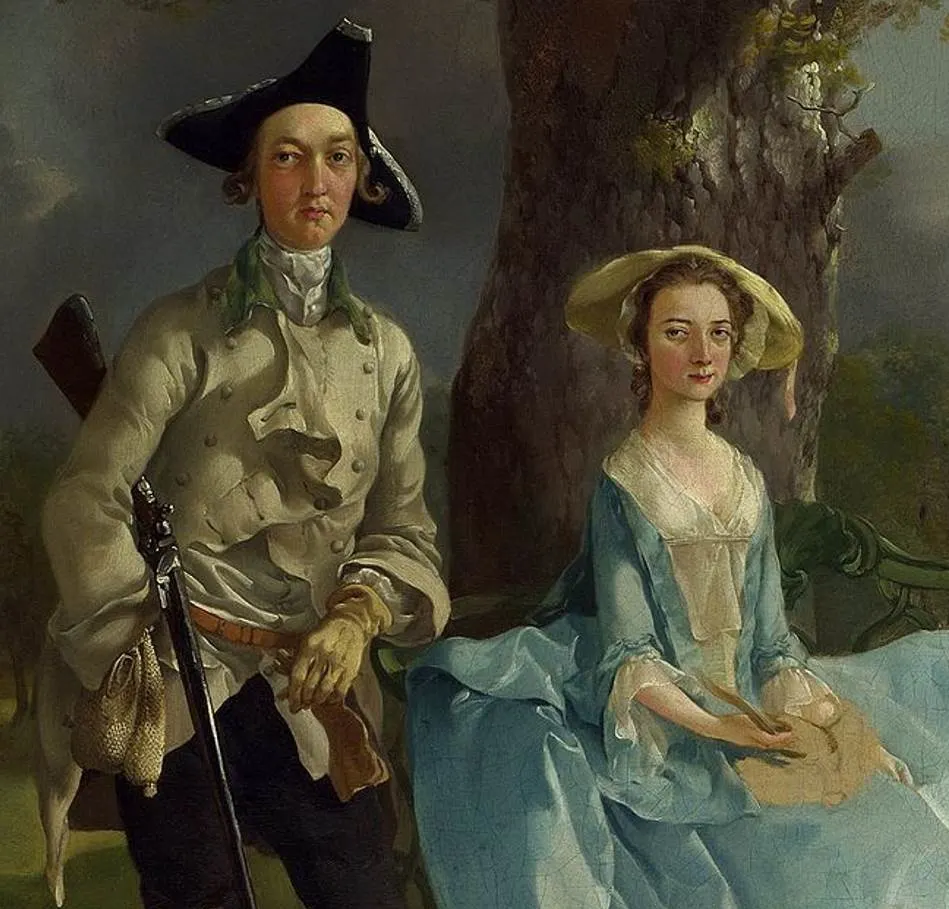
3. There’s probably a simple reason why Gainsborough included the landscape on the right
Robert Andrews was a member of the so-called “Landed Gentry.” This was the title to describe a wealthy person who could live from rental income or from the land he owned.
Robert’s father also loaned out money to other wealthy people at high-interest rates, so it’s fair to conclude that the extremely well-off.
The marriage of Robert and Frances was an arranged one. His father purchased an estate for the coupe in Bulmer called the Auberies and this allowed his son to marry someone of his class.
The landscape on the right was most probably part of the dowry of this arranged marriage.

4. The parallel rows of corn were much further away than the painting suggests
The Auberies estate where the couple lived can’t be seen in the painting, but it was located just nearby. It was located to the right of the viewer’s perspective, overlooking the landscape on the right.
The prominent parallel rows of corn in the foreground were depicted much closer than they would have been at the time.
These were produced with a seed drill invented by Jethro Tull (1674-1741) in 1700. It was likely included at the request of Robert Andrews to show off his modern farm.
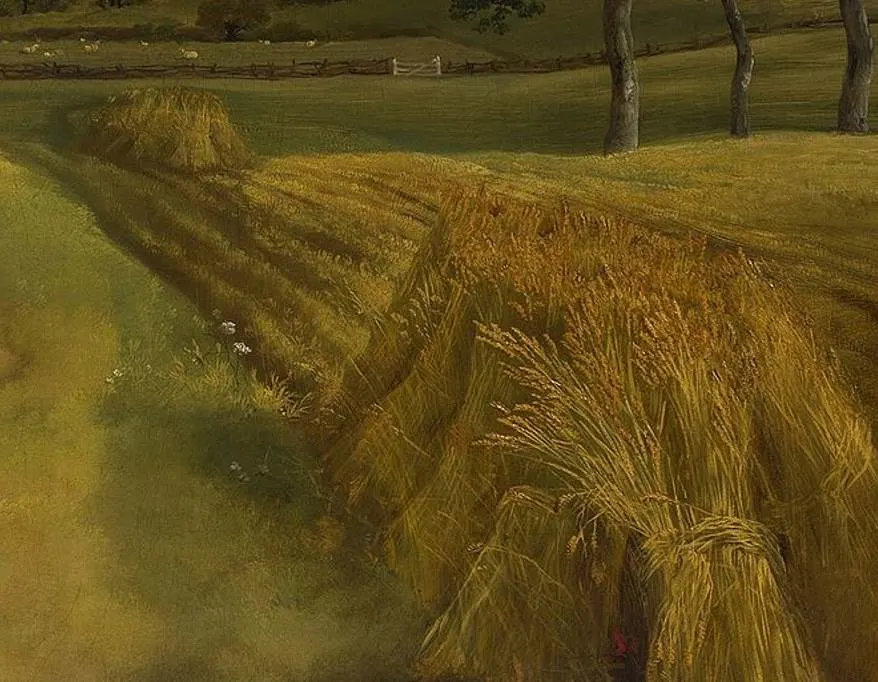
5. The artist included the church where the couple was married in the background
The background was accurately depicted by Thomas Gainsborough, including the barn buildings on the right. These were owned by Frances’ family and were located at Ballington Hall.
In the utmost left corner of the painting, we can distinguish the small tower of Holy Trinity Church in Long Melford.
The church that appears in between the trees in the middle of the painting is All Saints in Sudbury, the place where the couple got married two years earlier.
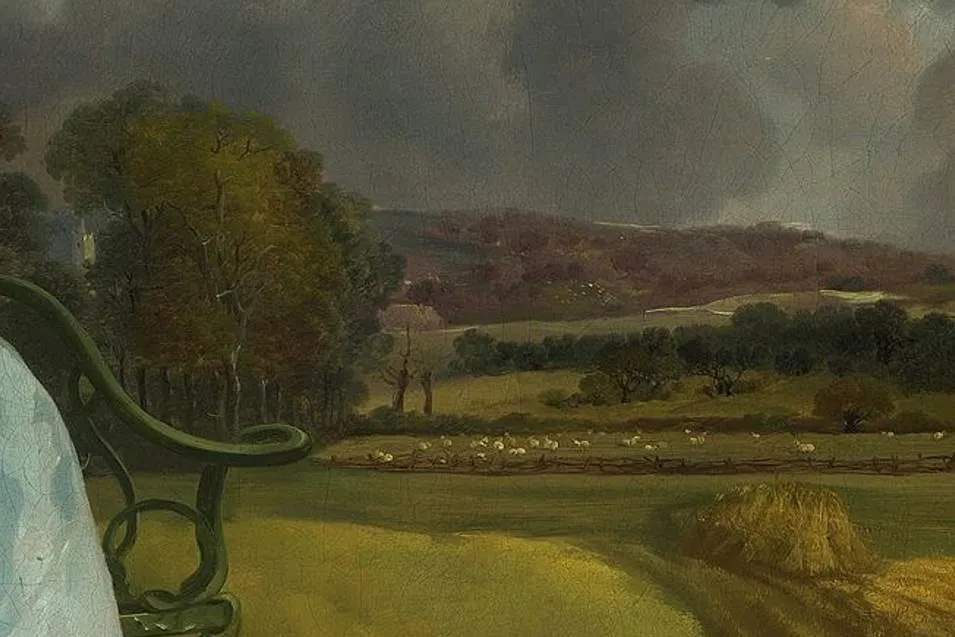
6. Gainsborough already painted the girl’s parents a couple of years earlier
Thomas Gainsborough was only 23 years old when he completed this work, and less than 2 years older than Robert Andrews.
They both attended Sudbury Grammar School around the same time so they had already known each other for a long time.
While studying in London, Gainsborough often returned to his native Sudbury. During these times he most probably produced preparatory drawings for a painting he completed in London.
He completed the Portrait of Mr and Mrs Carter between 1747 and 1748 which was a portrait of Mrs Andrews’ parents.

7. A specific area of the painting remained unfinished for an unknown reason
The artist left a particular area near France’s lap blank. Art historians have debated for centuries why Gainsborough did so.
This area was most probably reserved for adding an additional element that was never completed. A brown brushstroke near this area resulted in the theory that a cock pheasant was to be placed here.
It’sprobabyl more likely that a common item such as a book or knitting tools were intended to be painted here.
Another popular theory is that Gainsborough intended to paint their daughter here but that he never managed to do so. The couple’s first daughter was born in 1751, a year after the painting was completed.
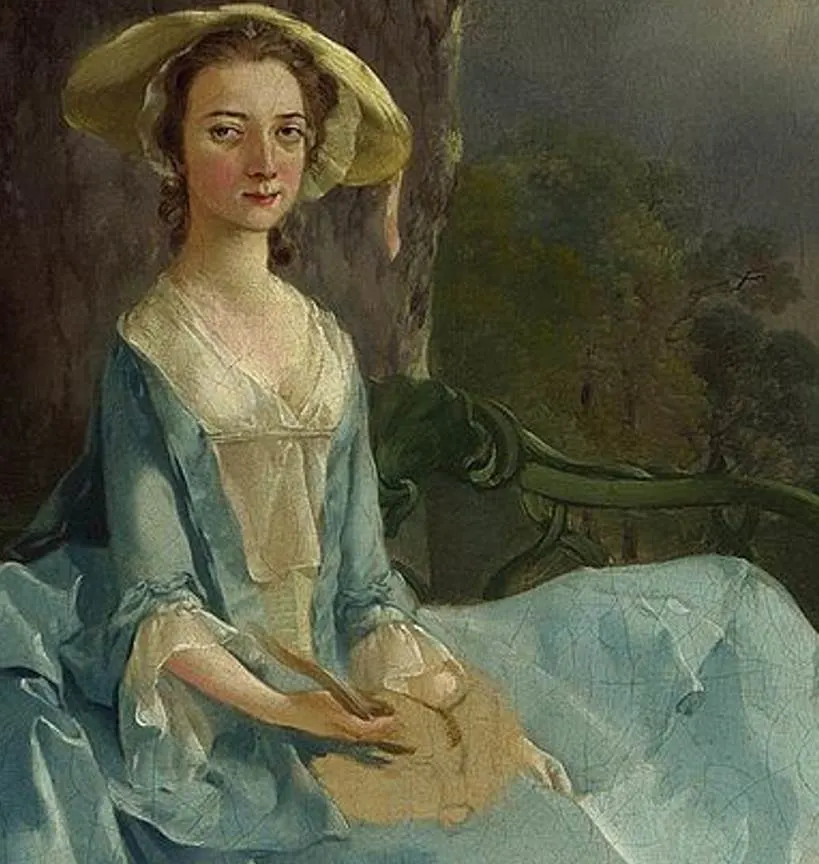
8. The work remained in the possession of the Andrews family until 1960
Rober and Frances Andrews had 9 children together. Unfortunately, Frances died in 1780 at the age of 48. Robert remarried and lived until the year 1806 when he was 80 years old.
The painting never left the family estate and was only “rediscovered” in 1927 when it was exhibited publicly for the first time in Ipswich. It became such a success that it was exhibited all around the world in the following decades.
Gerald Willoughbury Andrews (born in 1896), a great-great-great-grandson of the depicted couple, only sold the painting at Sotheby’s in London for £130,000.
9. How big is Mr and Mrs Andrews by Thomas Gainsborough?
This work is far from the largest painting in the oeuvre of Thomas Gainsborough, but it’s remarkable for its horizontal composition.
Mr and Mrs Andrews is an oil on canvas painting that has dimensions of 69.8 × 119.4 centimeters (27.5 × 47 inches).
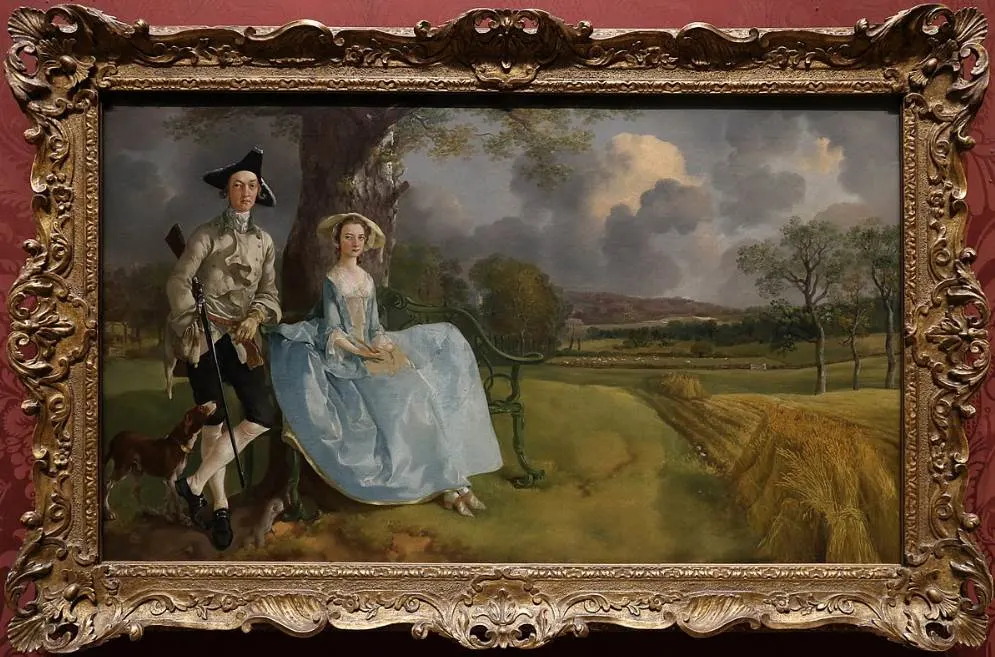
10. Where is the painting located today?
Gerald Willoughbury Andrews managed to fetch £130,000 for the painting in 1960, the equivalent of well over £2,1 million today.
While this is certainly a handsome amount of cash, it’s considered to be on the low-end today.
After all, Gainsborough’s world-famous “Blue Boy” sold for £148,000 in 1921, the equivalent of over £5 million today.
The painting was acquired by art dealer Thomas Agnew & Sons who acted as representatives of the National Gallery in London.
Today, the painting is still part of the collection of the National Gallery and is one of the museum’s most fascinating attractions.

